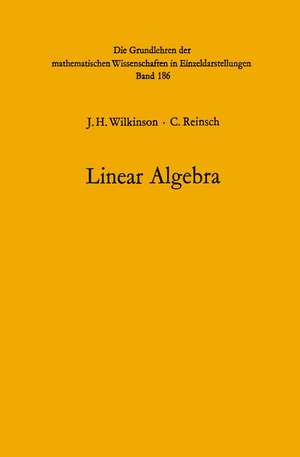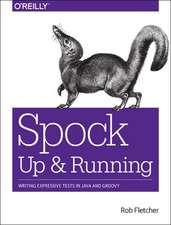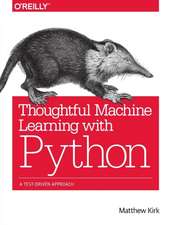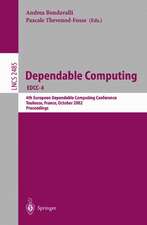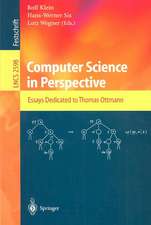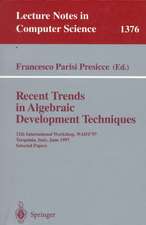Handbook for Automatic Computation: Volume II: Linear Algebra: Grundlehren der mathematischen Wissenschaften, cartea 186
Autor John H. Wilkinson Editat de Alston S. Householder Friedrich L. Bauer Autor C. Reinschen Limba Engleză Paperback – 23 aug 2014
Din seria Grundlehren der mathematischen Wissenschaften
- 24%
 Preț: 654.51 lei
Preț: 654.51 lei - 17%
 Preț: 539.33 lei
Preț: 539.33 lei - 18%
 Preț: 867.65 lei
Preț: 867.65 lei -
 Preț: 641.04 lei
Preț: 641.04 lei -
 Preț: 371.58 lei
Preț: 371.58 lei - 18%
 Preț: 746.64 lei
Preț: 746.64 lei -
 Preț: 417.23 lei
Preț: 417.23 lei - 24%
 Preț: 684.56 lei
Preț: 684.56 lei - 15%
 Preț: 573.68 lei
Preț: 573.68 lei - 24%
 Preț: 827.80 lei
Preț: 827.80 lei - 18%
 Preț: 874.17 lei
Preț: 874.17 lei - 18%
 Preț: 875.70 lei
Preț: 875.70 lei - 15%
 Preț: 455.01 lei
Preț: 455.01 lei - 15%
 Preț: 688.12 lei
Preț: 688.12 lei - 24%
 Preț: 1207.80 lei
Preț: 1207.80 lei - 20%
 Preț: 614.96 lei
Preț: 614.96 lei - 15%
 Preț: 435.43 lei
Preț: 435.43 lei -
 Preț: 343.01 lei
Preț: 343.01 lei -
 Preț: 403.27 lei
Preț: 403.27 lei -
 Preț: 465.91 lei
Preț: 465.91 lei -
 Preț: 406.97 lei
Preț: 406.97 lei - 15%
 Preț: 427.26 lei
Preț: 427.26 lei - 15%
 Preț: 507.50 lei
Preț: 507.50 lei - 15%
 Preț: 566.94 lei
Preț: 566.94 lei -
 Preț: 340.03 lei
Preț: 340.03 lei - 18%
 Preț: 699.51 lei
Preț: 699.51 lei -
 Preț: 373.24 lei
Preț: 373.24 lei - 15%
 Preț: 437.32 lei
Preț: 437.32 lei - 15%
 Preț: 462.55 lei
Preț: 462.55 lei -
 Preț: 446.83 lei
Preț: 446.83 lei -
 Preț: 348.34 lei
Preț: 348.34 lei -
 Preț: 469.46 lei
Preț: 469.46 lei - 15%
 Preț: 430.41 lei
Preț: 430.41 lei -
 Preț: 403.83 lei
Preț: 403.83 lei - 18%
 Preț: 709.63 lei
Preț: 709.63 lei -
 Preț: 373.76 lei
Preț: 373.76 lei -
 Preț: 403.27 lei
Preț: 403.27 lei - 15%
 Preț: 558.62 lei
Preț: 558.62 lei -
 Preț: 478.73 lei
Preț: 478.73 lei -
 Preț: 346.88 lei
Preț: 346.88 lei -
 Preț: 373.03 lei
Preț: 373.03 lei -
 Preț: 403.83 lei
Preț: 403.83 lei -
 Preț: 436.47 lei
Preț: 436.47 lei
Preț: 901.25 lei
Preț vechi: 1126.57 lei
-20%
Puncte Express: 1352
Preț estimativ în valută:
159.56€ • 185.79$ • 138.61£
159.56€ • 185.79$ • 138.61£
Carte tipărită la comandă
Livrare economică 23 februarie-09 martie
Preluare comenzi: 021 569.72.76
Specificații
ISBN-13: 9783642869426
ISBN-10: 3642869424
Pagini: 452
Ilustrații: IX, 441 p. 1 illus.
Dimensiuni: 155 x 235 x 27 mm
Greutate: 0.63 kg
Ediția:Softcover reprint of the original 1st ed. 1971
Editura: Springer Berlin, Heidelberg
Colecția Springer
Seria Grundlehren der mathematischen Wissenschaften
Locul publicării:Berlin, Heidelberg, Germany
ISBN-10: 3642869424
Pagini: 452
Ilustrații: IX, 441 p. 1 illus.
Dimensiuni: 155 x 235 x 27 mm
Greutate: 0.63 kg
Ediția:Softcover reprint of the original 1st ed. 1971
Editura: Springer Berlin, Heidelberg
Colecția Springer
Seria Grundlehren der mathematischen Wissenschaften
Locul publicării:Berlin, Heidelberg, Germany
Public țintă
ResearchCuprins
I Linear Systems, Least Squares and Linear Programming.- to Part I (J. H. Wilkinson) ..- Contribution I/1: Symmetric Decomposition of a Positive Definite Matrix.- Contribution I/2: Iterative Refinement of the Solution of a Positive Definite System of Equations.- Contribution I/3: Inversion of Positive Definite Matrices by the Gauss-Jordan Method.- Contribution I/4: Symmetric Decomposition of Positive Definite Band Matrices.- Contribution I/5: The Conjugate Gradient Method.- Contribution 1/6: Solution of Symmetric and Unsymmetric Band Equations and the Calculation of Eigenvectors of Band Matrices.- Contribution I/7: Solution of Real and Complex Systems of Linear Equations.- Contribution I/8: Linear Least Squares Solutions by Householder Transformations.- Contribution I/9: Elimination with Weighted Row Combinations for Solving Linear Equations and Least Squares Problems.- Contribution I/l0: Singular Value Decomposition and Least Squares Solutions.- Contribution I/l l: A Realization of the Simplex Method based on Triangular Decompositions.- II The Algebraic Eigenvalue Problem.- to Part II (J. H. Wilkinson).- Contribution II/l: The Jacobi Method for Real Symmetric Matrices.- Contribution II/2: Householder’s Tridiagonalization of a Symmetric Matrix.- Contribution II/3: The QR and QL Algorithms for Symmetric Matrices.- Contribution II/4: The Implicit QL Algorithm.- Contribution II/5: Calculation of the Eigenvalues of a Symmetric Tridiagonal Matrix by the Method of Bisection.- Contribution II/6: Rational Q R Transformation with Newton Shift for Symmetric TridiagonalMatrices.- Contribution II/7: The QR Algorithm for Band Symmetric Matrices.- Contribution II/8: Tridiagonalization of a Symmetric Band Matrix.- Contribution II/9: Simultaneous Iteration Method for SymmetricMatrices.- Contribution II/l0: Reduction of the Symmetric Eigenproblem A x =?Bx and Related Problems to Standard Form.- Contribution II/11: Balancing a Matrix for Calculation of Eigenvalues and Eigenvectors.- Contribution II/12: Solution to the Eigenproblem by a Norm Reducing Jacobi Type Method.- Contribution II/13: Similarity Reduction of a General Matrix to Hessenberg Form.- Contribution II/14: The QR Algorithm for Real Hessenberg Matrices.- Contribution II/15: Eigenvectors of Real and Complex Matrices by L R and Q R triangulari.- Contribution II/16: The Modified L R Algorithm for Complex Hessenberg Matrices.- Contribution II/l 7: Solution to the Complex Eigenproblem by a Norm Reducing Jacobi Type Method.- Contribution II/l 8: The Calculation of Specified Eigenvectors by Inverse Iteration.
